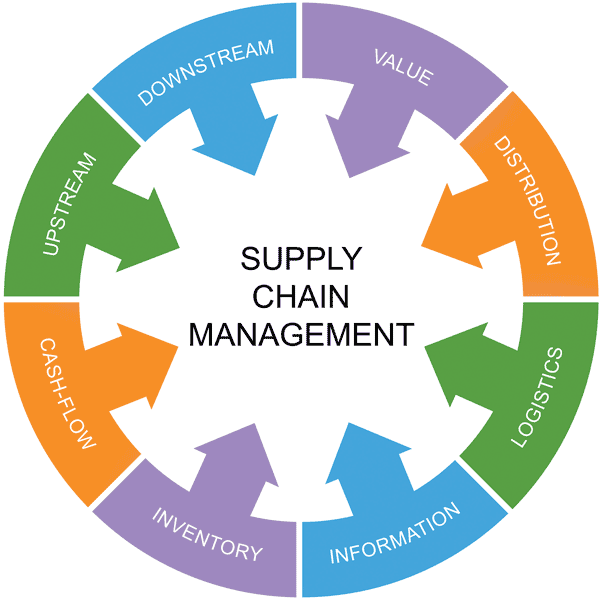BUILDING RESILIENCE
with HV Mfg Staff
RETHINKING
SUPPLY CHAINS
FOR STRENGTH & RESILIENCE
Strategies to improve your manufacturing business’ supply chain and to position it to be a key component of your customers’ as well.

The supply and demand upheaval brought on by the COVID pandemic is forcing Hudson Valley manufactures–and manufacturers everywhere–to reassess their supply chains. The pandemic laid bare many of the long-standing vulnerabilities and risks lurking in organizations’ supply chains. In some cases, it has caused companies to take a hard look at their processes and their business models. In others, it has opened new opportunities for innovation, growth, and competitive advantage in the post pandemic world.
This article looks at some of the supply chain best practices and thought leadership that has been done since the global pandemic began and condenses it into some common themes and actions manufacturers can take to strengthen their supply chains, build resilience and manage risk – without sacrificing competitiveness.
The COVID-19 crisis has shown the need to have a diversified approach to sourcing.
SUPPLY CHAINS IN THE POST PANDEMIC WORLD
For the foreseeable future, manufacturers will face pressure to increase domestic production, grow employment in their home countries, reduce their dependence on risky sources, and rethink strategies of lean inventories and just-in-time replenishment, which can be crippling when material shortages arise.
Beyond the immediate economic and operational challenges created by the COVID-19 pandemic, Adam Mussomeli, Supply Chain & Network Operations lead for Deloitte believes that “despite the profound shifts we’ve experienced over the past year, the future of supply chains doesn’t look all that different from how we previously imagined it—we expect to simply get there much faster.” He argues that the supply chain world was heading toward greater integration prior to the pandemic and, like many existing business and societal trends, COVID-19 has accelerated that movement.

POSITIONING YOUR SUPPLY CHAIN FOR RESILIENCY AND OPPORTUNITY
Understanding these trends and strategies can help your manufacturing business strengthen its supply chain and position it to be an integral component of your customers’ supply chain strengthening strategy.
Build capacity and inventory buffers.
Buffer capacity is the most straightforward way to enhance resilience, whether in the form of underutilized production facilities or inventory in excess of safety stock requirements. The challenge is that buffers are expensive, capital intensive and are often times difficult to justify.
Leading companies use buffers in the form of surge capacity for new product launches or expansions into new growth areas. Organizations can also create buffer capacity by using contract manufacturers strategically for their surge needs.
Develop multi-sourcing, diversification and nearshoring.
A decade ago, the Fukushima disaster in Japan disrupted supply chains across the world and exposed companies’ reliance on single sources of supply. In the automotive industry, nearly finished cars could not be shipped to customers because of missing, and often inexpensive, components. Multisource is an obvious way to mitigate this risk. To craft a multisource strategy, supply chain leaders must be able to categorize suppliers not just by how much they spend with them, but also by revenue impact if a disruptive event occurs.
In response to the U.S.-China trade war, many companies have begun to diversify their sourcing or manufacturing bases. For some, this has meant switching to new suppliers outside China, or asking existing partners to supply them from elsewhere in Asia or in countries such as Mexico.
Fukushima and COVID–19 are glaring examples of supply chain disruption but not the only ones. In fact, disruptions to supply chain operations have intensified in the past few years. This means that the cost of retaining multiple supply locations can be seen less as an inefficiency and more as a cost of doing business. By mapping the full extent of your supply network and identifying both direct and indirect sources, you can then determine how quickly those most vital to your operation could either recover from a disruption or be replaced by an alternative. Address the vulnerabilities by diversifying your suppliers or stockpiling essential materials.
Beyond multi-sourcing, some companies want to reduce geographic dependence in their global networks and shorten cycle times for finished products. Nearshoring, or creating regional or local supply chains, can be more expensive because they add more players and complexity to the ecosystem, but they allow for more control over inventory and move the product closer to the end consumer.

Build in sustainability.
Every supply chain has its environmental and social consequences. From the carbon emissions of transportation networks to the industrial waste from factories, to the ethics practiced by suppliers, all the issues surrounding sustainability do not go away during times of global disruption. Indeed, sustainable supply chain practices are even more relevant in a world where resources may be harder to come by.
The best strategy is to embed principles of sustainability in your supply chain, using them to guide decisions ranging from product design and factory floor configuration to sourcing and logistics. Sustainability and a healthy bottom line are perfectly compatible, even in the toughest of times.
Ecosystem partnerships
The COVID-19 crisis has shown the need to have a diversified approach to sourcing. At the same time, however, collaboration with strategic raw material suppliers and external service partners is also vital to ensure better preparedness and resilience for the future. For companies without the scale to support multiple locations on their own, strong relationships with contract manufacturers, and global third-party logistics providers (3PLs) can be vital in diversifying production and distribution to different countries.
Sustainability and a healthy bottom line are perfectly compatible – even in the toughest of times.
The economic turmoil caused by the pandemic has exposed many vulnerabilities in supply chains and raised doubts about globalization. Managers everywhere are using this crisis to take a fresh look at their supply networks, taking steps to understand their vulnerabilities, and actions to improve resilience and strength. They can’t and shouldn’t totally back away from globalization; doing so will leave a void that others—companies that don’t abandon globalization—will gladly and quickly fill. Instead, leaders should find ways to make their businesses work better and give themselves an advantage. It’s time to adopt a new vision suitable to the realities of the new era—one that still leverages the capabilities that reside around the world but also improves resilience and reduces the risks from future disruptions that are certain to occur.
This rethinking of supply chains creates opportunities for small and mid-sized manufacturers. Positioning your business to be the buffer, nearshoring, diversification, multi-sourcing, and/or sustainability solution to a customer or potential customers’ supply chain challenge can mean long term and sustainable growth.


